American soldiers who served in World War I competed in 'Olympic-style' Inter-Allied Games
This time a century ago, American soldiers who had just finished fighting in World War I, participated in an 'Olympic-style' athletic competition in France called the Inter-Allied Games. First proposed by the YMCA before the end of the war, the Inter-Allied Games gained traction as a way to keep morale up as troops waited to return to America. The Games were based at Pershing Stadium, built by the YMCA specifically for the competition.
Those across the Atlantic still waiting to return home around this time a century ago were participating in the Inter-Allied Games, a unique sporting competition featuring men in uniform from 14 nations going head-to-head in events ranging from swimming to hand-grenade throwing.
“This was really an effort to create some kind of group activity among the Allies that were still present in France to show that they can be important in peace as in war,” Doran Cart, a senior curator at the National World War I Museum and Memorial, told Fox News.
“It wasn’t an Olympic event, but it was an Olympic-style event,” Cart added.
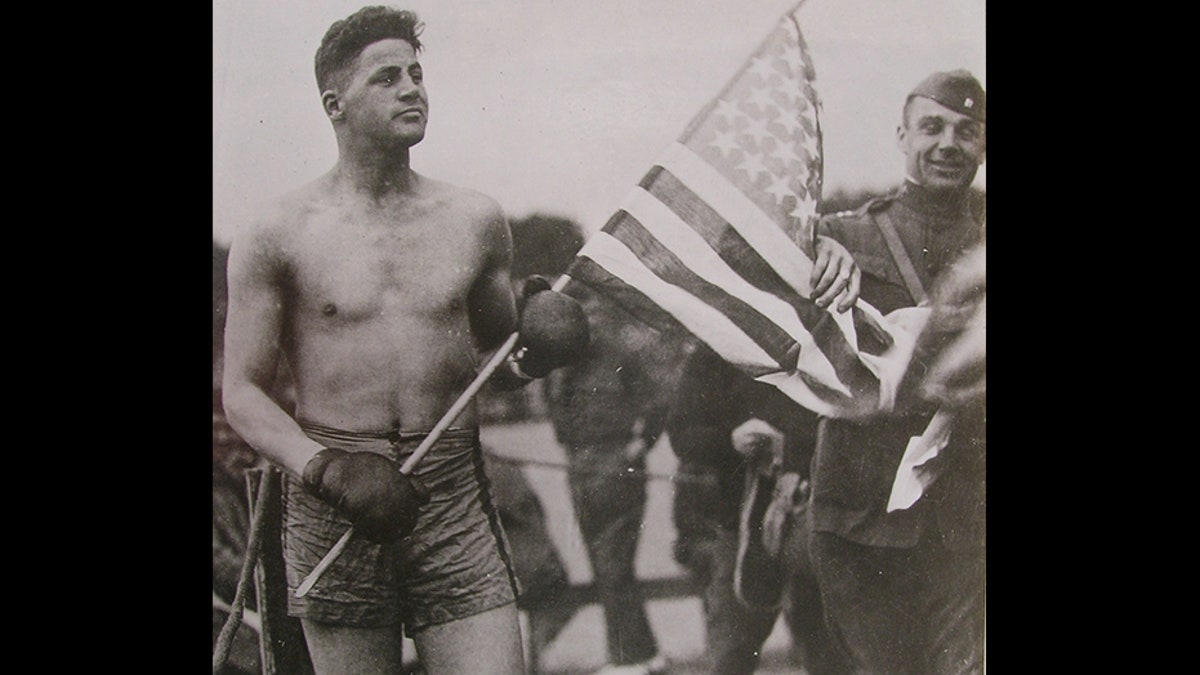
American forces who were waiting to return stateside following the end of World War I competed in the Inter-Allied Games. (National World War I Museum and Memorial)
The Museum has shared with Fox News a number of photographs from the competition, centered around a hastily-constructed stadium outside of Paris and lasting from June 22 to July 6, 1919.
Months before the Games took place, the sudden end of World War I caught Allied commanders by surprise, Cart says. American military officials believed the Great War would last longer than it did, and therefore, hadn’t put much thought into figuring out how to get their soldiers home in a timely manner.
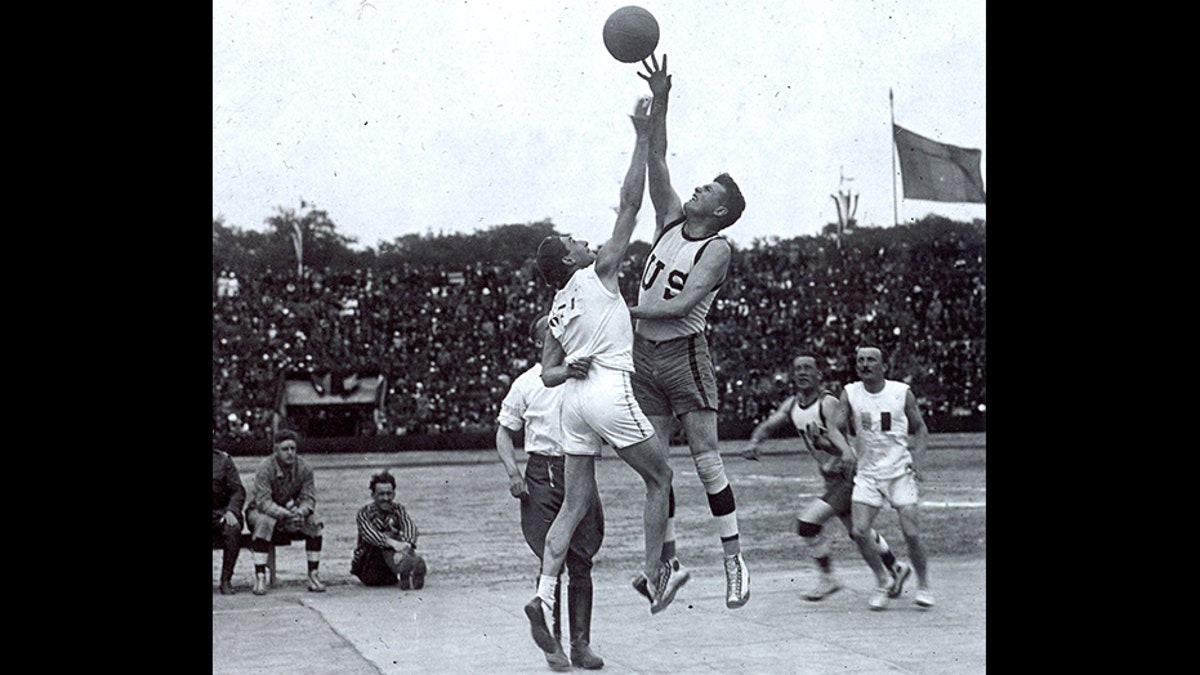
The Inter-Allied Games helped bring popular American sports like basketball to the global stage. (National World War I Museum and Memorial)
The premise of an Inter-Allied Games – first proposed by the Young Men’s Christian Association before the war ended – started to gain traction as a way to keep morale up as troops waited to return to America.
“Their idea was, if you keep people busy…they are not going to have time to get into trouble,” Cart said.
The YMCA, which Cart says provided an “incredible amount of sporting equipment to the men and women in service during the War,” then offered up $100,000 to make the Games a reality.
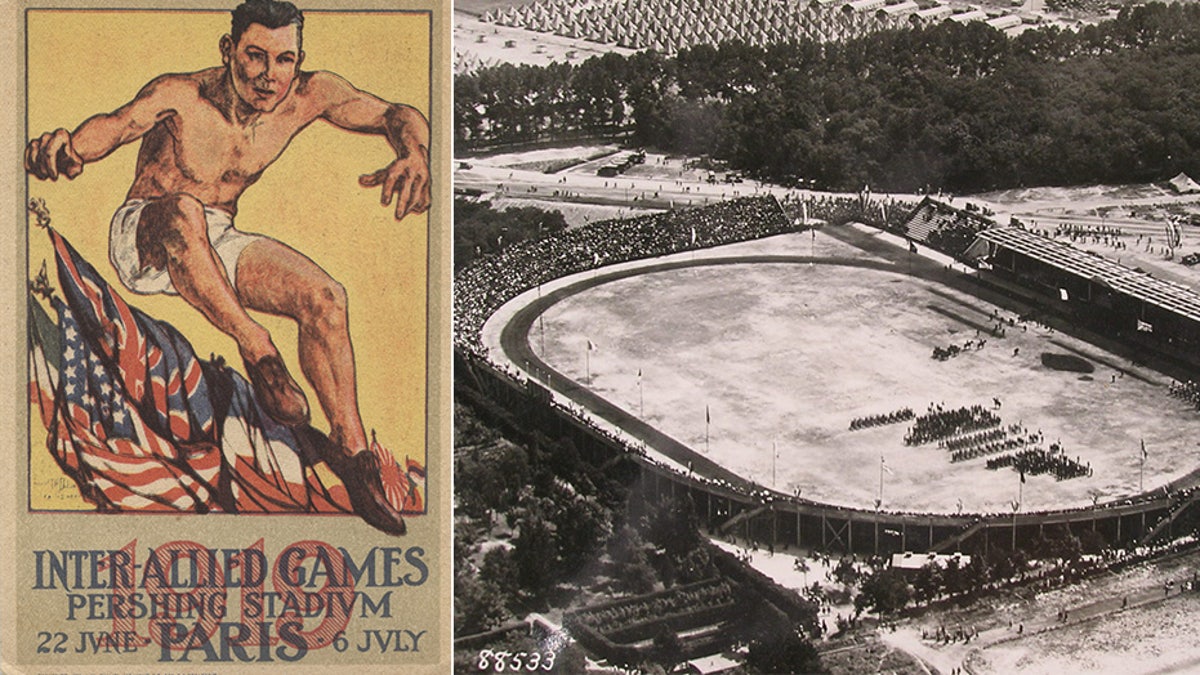
The Games were based at Pershing Stadium, built specifically for the competition. (National World War I Museum and Memorial)
WORLD WAR I POSTERS OFFER UNIQUE GLIMPSE INTO SOLDIERS' STORIES YEARS AFTER THE ARMISTICE
The organization signed a contract in February 1919 to fund the construction of Pershing Stadium – named after John Pershing, U.S. Army general and commander of the American Expeditionary Forces – outside of Paris.
The contract required the stadium to be built in just three months. But when labor issues threatened its completion, “American engineers and labor troops, in their olive drab uniforms, worked night and day on the stadium along with a force of about 300 French soldiers” in order to get it finished, the Museum said in a summary of the event.
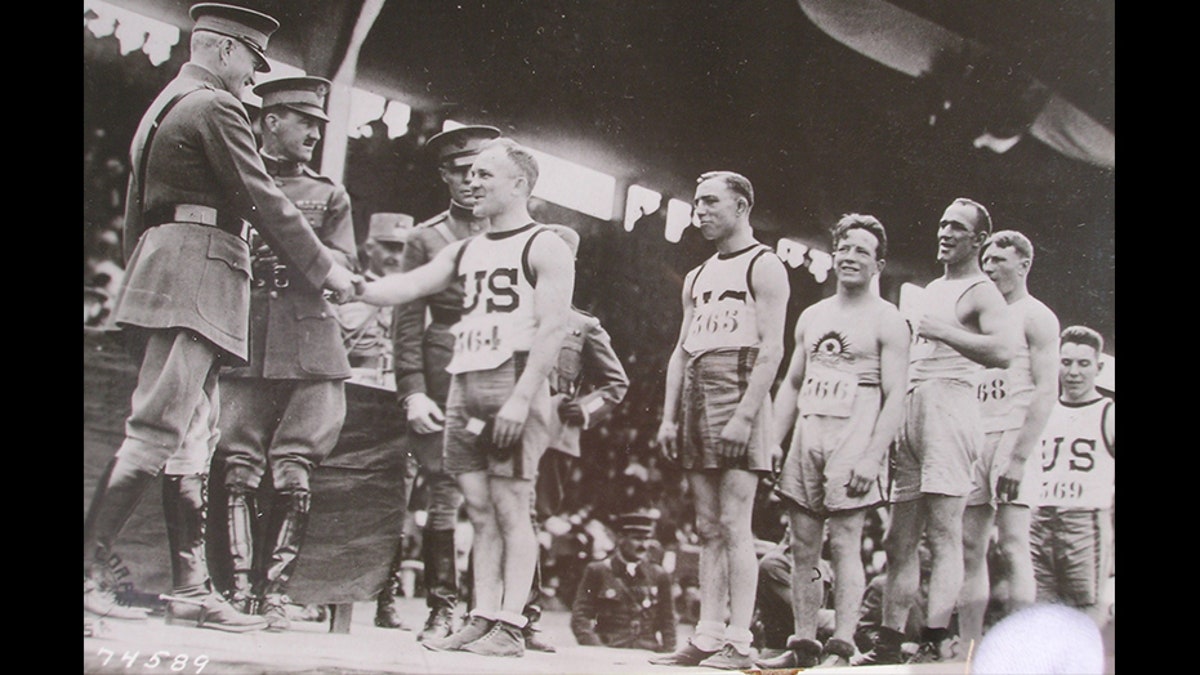
The U.S. team dominated in events like wrestling, track and field -- and the grenade throw. (National World War I Museum and Memorial)
Once built, Pershing Stadium held around 30,000 spectators and enclosed nine acres of fields.
“That the cherished bonds of friendship between France and America, forged anew on the common field of battle, may be tempered and made enduring on the friendly field of sport,” read a bronze plaque placed on the stadium’s Tribune of Honor, a platform where dignitaries sat during the Games.
For just over two weeks in June and July that year, tens of thousands packed Pershing Stadium and other parts of France to witness sporting competition between the Allied forces.
AMERICA'S DEADLIEST BATTLE: WORLD WAR I'S MEUSE-ARGONNE OFFENSIVE
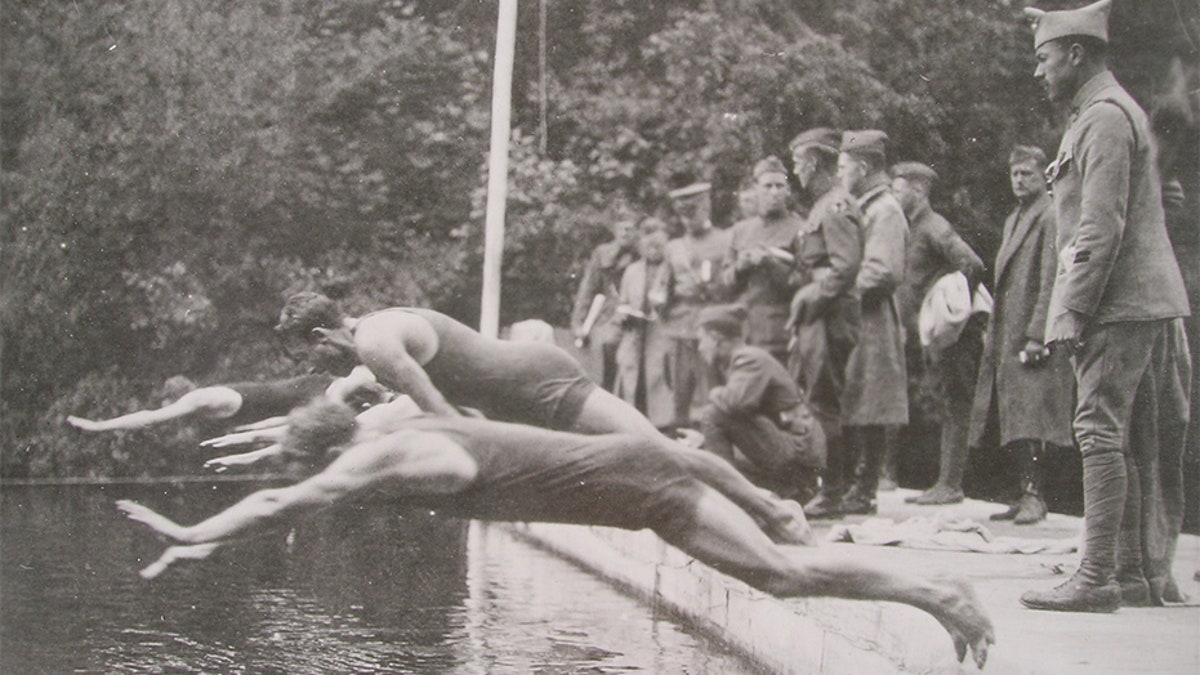
Some American athletes who won events at the Inter-Allied games would go on to win gold medals the next year during the 1920 Summer Olympics in Belgium. (National World War I Museum and Memorial)
The U.S. dominated events such as track and field, rifle and pistol shooting and tug-of war, where when “matched against the heavy Belgian eight in the finals, the Americans pulled the Belgians to and over the line in 14 seconds,” the Museum says.
Charley Paddock, a runner who served as a lieutenant for the United States Field Artillery during World War I, was a standout athlete at the Inter-Allied Games, winning the 100 and 200-meter events. He would then go on to win gold and silver in the same competitions during the 1920 Summer Olympics in Belgium.
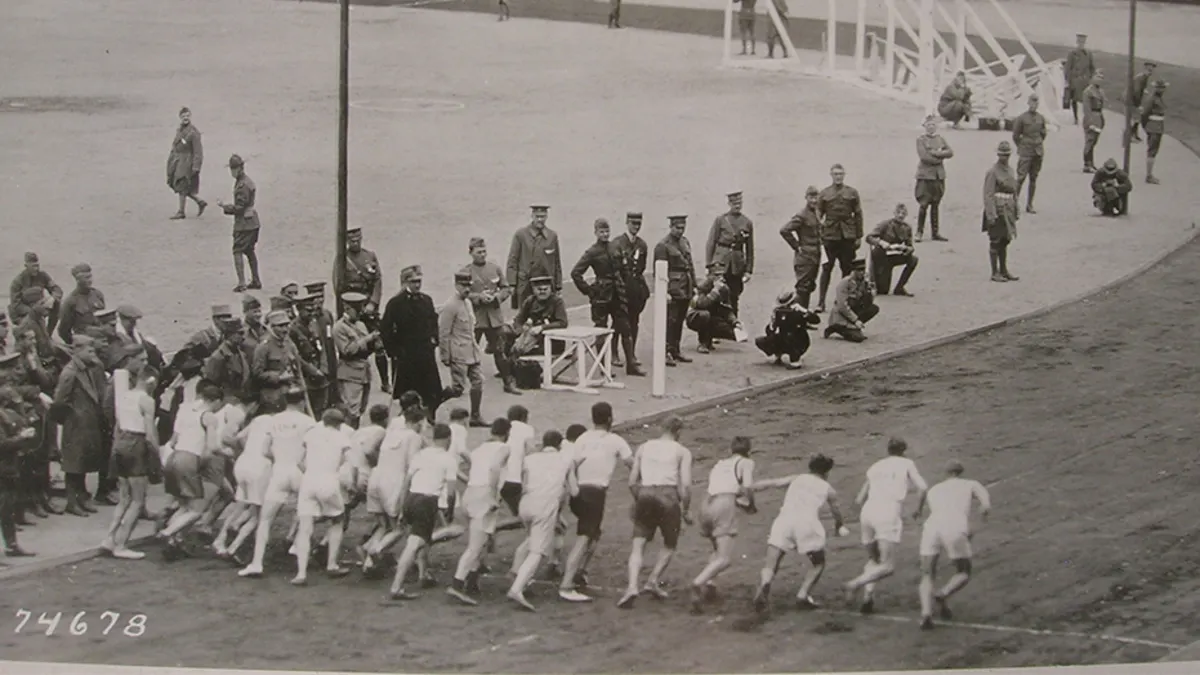
The Inter-Allied Games were contested between the U.S., Australia, Belgium, Canada, Czecho-Slovakia, France, Greece, Arabia, Italy, Newfoundland, New Zealand, Portugal, Romania and Great Britain. (National World War I Museum and Memorial)
Norman Ross, an American swimmer who won five events at the Inter-Allied Games, also continued his momentum by winning Olympic gold the following year as well.
Fred Thompson, an Army chaplain from California, won the Games’ grenade-throwing competition, chucking a French F-1 field grenade nearly 250 feet.
The Games also helped introduce sports that were popular in America, such as baseball and basketball, to a wider, global audience.
CLICK HERE TO GET THE FOX NEWS APP
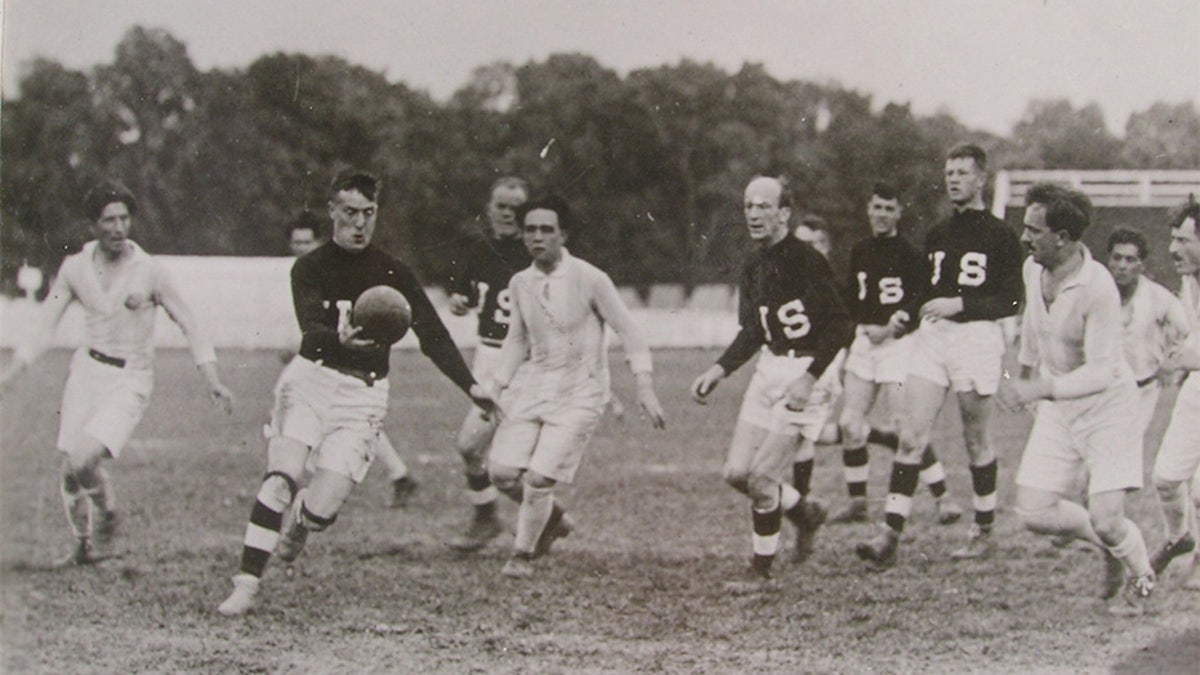
The Games were intended to help build bonds between the Allied forces following the end of World War I. (National World War I Museum and Memorial)
“Each competing winner received an official engraved certificate which accompanied each prize medal,” the Museum said. “A case was provided for each medal; blue cases contained the first prize, red cases the second, and green cases the third.”
“On the final day of the Inter-Allied competition, bands in the crowded arena played the ‘Star Spangled Banner’ followed by the ‘Marseillaise’,” it added, and then “the flags of the Allies were slowly lowered, and 30,000 spectators witnessed the stadium being gifted to France” by Gen. Pershing as a “memorial to the American Expeditionary Forces.”

